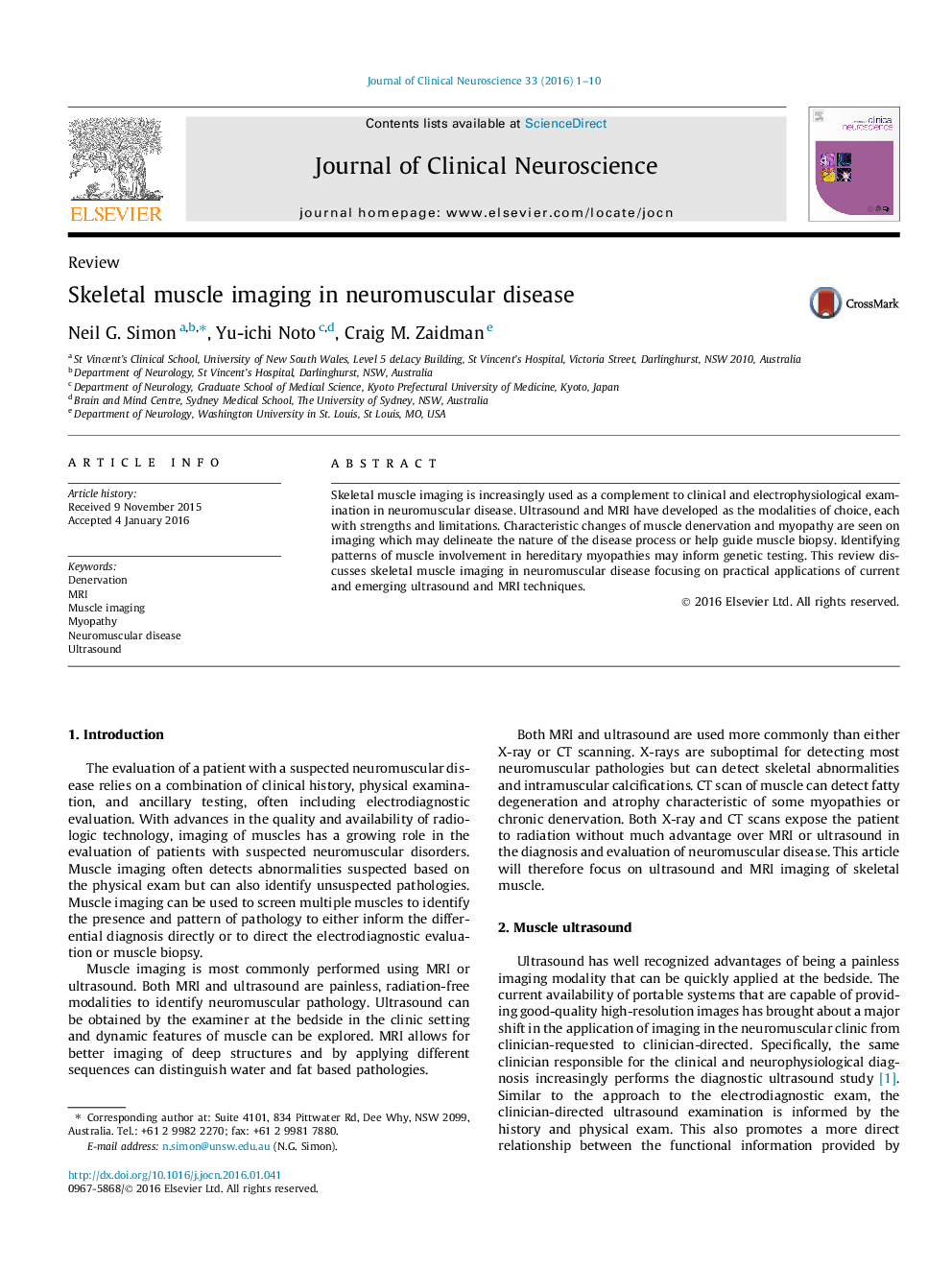| Article ID | Journal | Published Year | Pages | File Type |
|---|---|---|---|---|
| 5630000 | Journal of Clinical Neuroscience | 2016 | 10 Pages |
â¢Muscle ultrasound (US) and MRI are complementary to clinical and electrodiagnostic evaluation of neuromuscular disease.â¢US has benefits of portability for clinic-based use, and dynamic imaging for assessing normal and abnormal muscle movements.â¢MRI has the benefit of distinguishing between water- and fat-based muscle pathologies.â¢Changes on muscle MRI and US may be quantified for objective disease monitoring and research applications.â¢Anatomical distribution of muscle abnormalities may provide clues for diagnosis of genetic and inflammatory muscle diseases.
Skeletal muscle imaging is increasingly used as a complement to clinical and electrophysiological examination in neuromuscular disease. Ultrasound and MRI have developed as the modalities of choice, each with strengths and limitations. Characteristic changes of muscle denervation and myopathy are seen on imaging which may delineate the nature of the disease process or help guide muscle biopsy. Identifying patterns of muscle involvement in hereditary myopathies may inform genetic testing. This review discusses skeletal muscle imaging in neuromuscular disease focusing on practical applications of current and emerging ultrasound and MRI techniques.
